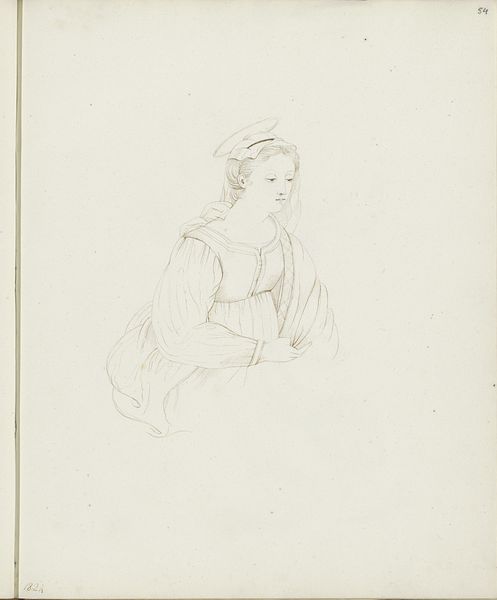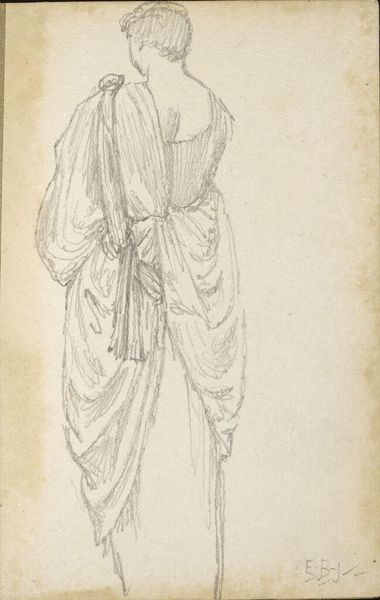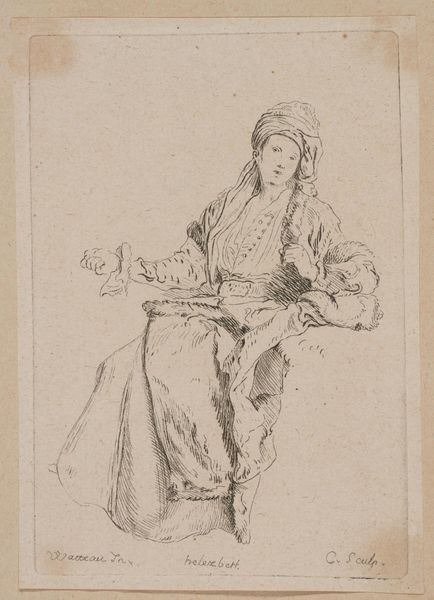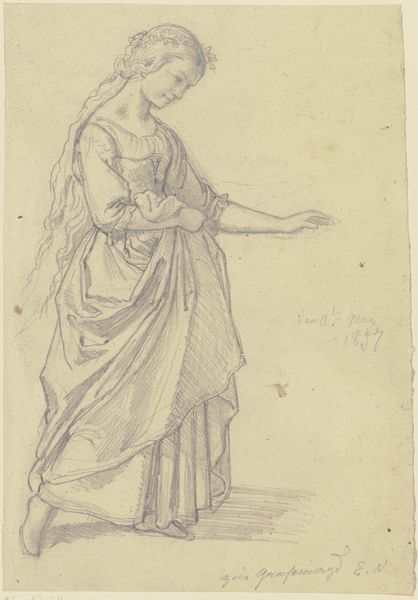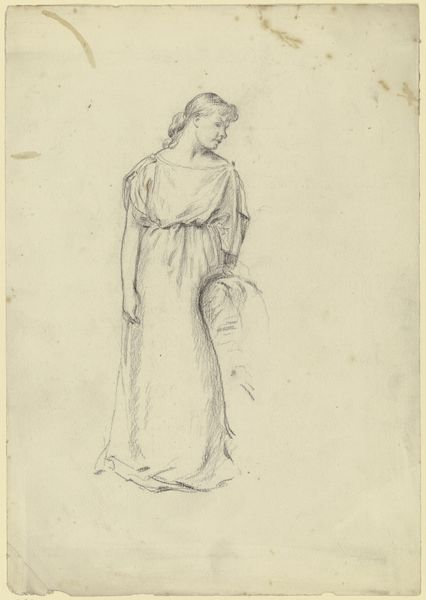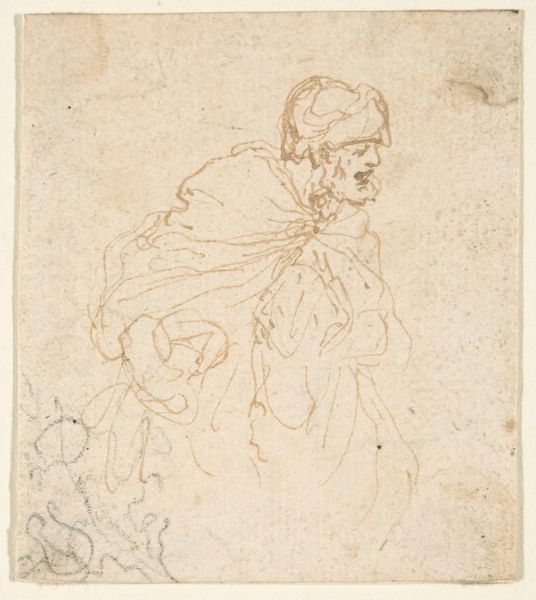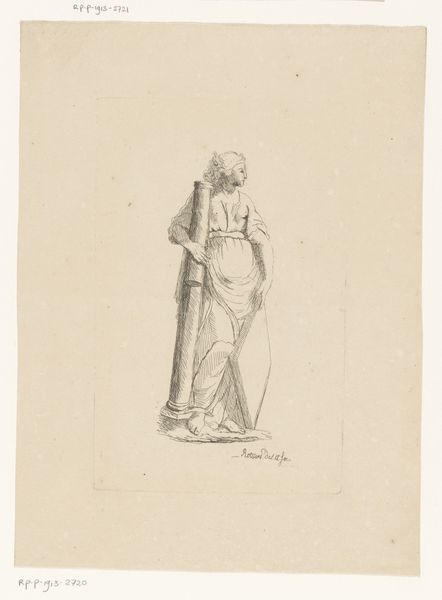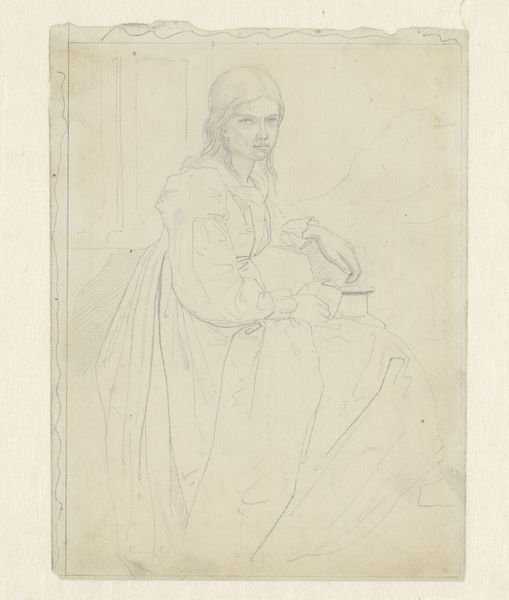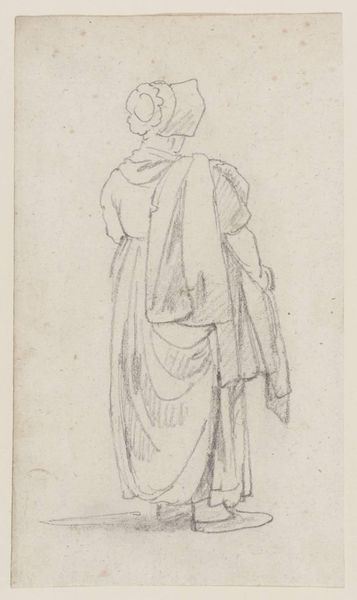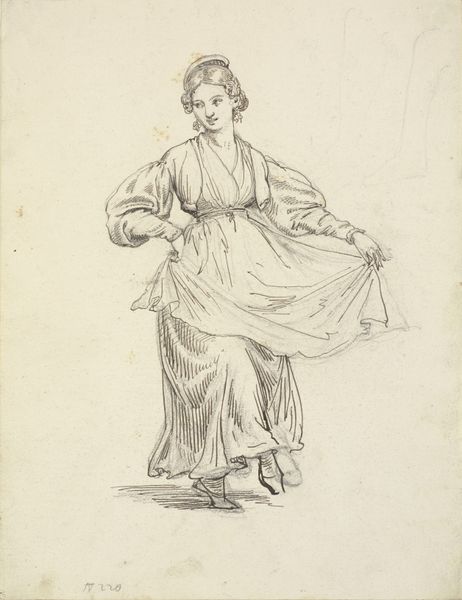
drawing, ink
#
portrait
#
drawing
#
baroque
#
etching
#
figuration
#
ink
Dimensions: height 159 mm, width 142 mm
Copyright: Rijks Museum: Open Domain
Curator: Here at the Rijksmuseum, we have "Kneeling Man in a Turban and Heavy Robes" by Rembrandt van Rijn, created circa 1650-1665. It's an ink drawing, almost ephemeral in its execution. Editor: My initial impression is one of humility. There's a distinct sense of vulnerability in the figure's posture and the lightness of the linework. Curator: Indeed. As a drawing, the labor involved is immediate. Ink and paper. But consider the robes, possibly silk or a fine wool – their production points to trade routes, skilled weavers, and the social status denoted by such garments in Rembrandt's time. The turban itself implies a connection to the East, fueling European fascination and often misrepresentation of those cultures. Editor: Absolutely. Turbans, throughout history, have carried so much symbolic weight, often tied to power, religion, and cultural identity. This image uses that instantly recognizable visual cue to communicate the sitter's…otherness. What’s interesting is how Rembrandt utilizes shadow and line to evoke an almost biblical quality. Is he a wise man, a supplicant, a prophet perhaps? Curator: It raises interesting questions about cultural exchange and appropriation. Rembrandt’s access to these garments – whether through trade or the curiosity cabinets of wealthy patrons – reflects the power dynamics of his era. He's engaging with, and possibly exoticizing, a culture he likely only knew second-hand. Editor: And this kneeling gesture, seen through the lens of iconography, also lends itself to the idea of religious supplication or reverence. Kneeling figures recur across centuries to show profound spiritual moments, acts of fealty and surrender. The loose lines give us less narrative specificity and more open emotion to access in this particular figure. Curator: Right. It underscores the complexity inherent in representing someone from another culture; what appears as reverence could equally be exploitation through artistic rendering. Editor: It's interesting how looking closely at a simple sketch allows us to delve into trade networks, societal structures, and the psychology of intercultural representation. Curator: Ultimately, I believe, "Kneeling Man in a Turban and Heavy Robes" functions as a window into Rembrandt's process but also provides insights into the socio-political and material realities of 17th-century Europe. Editor: And, on a more fundamental level, it reminds us how powerful symbols are in communicating complex social and personal experiences.
Comments
No comments
Be the first to comment and join the conversation on the ultimate creative platform.

